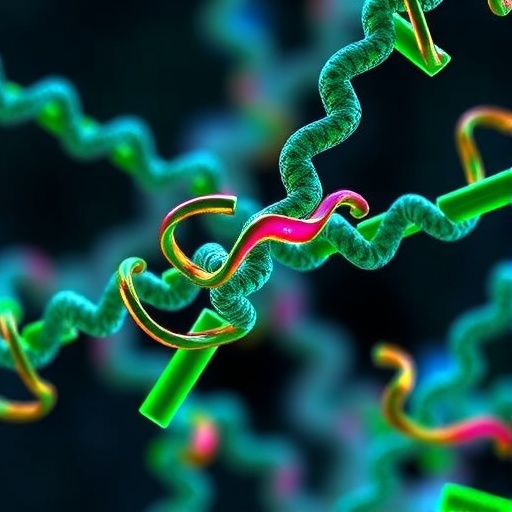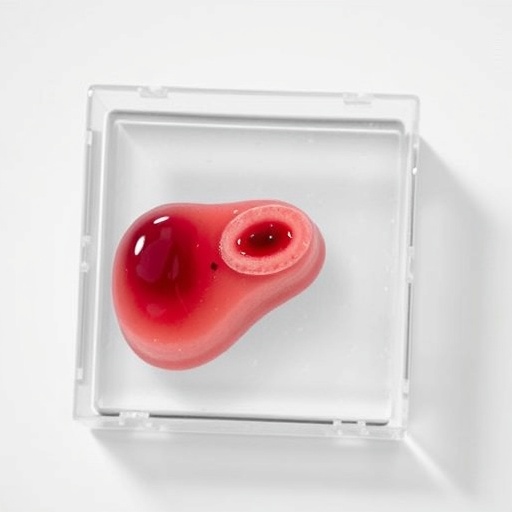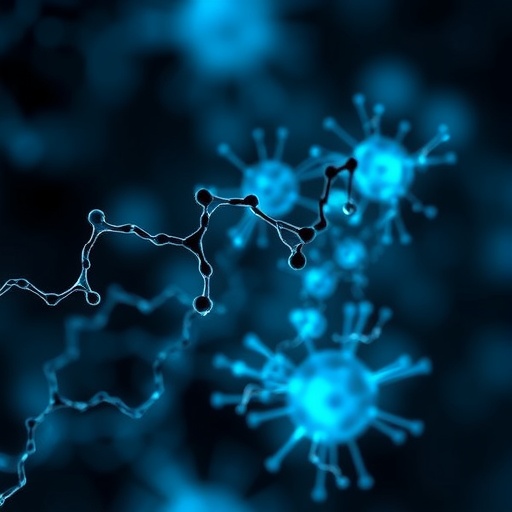
In recent years, the intersection of neuroscience, pharmacology, and molecular biology has led to a deeper understanding of how various compounds interact with the human body at the cellular level. One intriguing area of study is the interaction between cannabinoids, specifically Îâ¹-tetrahydrocannabinol (Îâ¹-THC), and the protein tubulin, which is essential for numerous cellular processes. A groundbreaking research article by Mohammadkhani, Jarah, and Gholami delves into the structural changes of tubulin as it interacts with Îâ¹-THC, shedding light on the complex dynamics of cannabinoid action within the nervous system.
The investigation begins with a compelling premise: the potential therapeutic benefits of cannabinoids in treating neurological disorders. Researchers have long been aware that cannabinoids can influence the endocannabinoid system, a complex network of receptors in the brain and body. However, the precise mechanisms through which these compounds exert their effects remain partially understood. Tubulin, a critical component of the cytoskeleton in eukaryotic cells, plays a pivotal role in maintaining cellular structure, facilitating transport, and enabling mitosis. The study’s authors aimed to uncover how Îâ¹-THC interacts with tubulin at the molecular level.
Using a combination of in-vitro experiments and theoretical simulations, the researchers conducted a detailed analysis of the binding affinity of Îâ¹-THC to tubulin. They discovered that Îâ¹-THC binds to specific sites on the tubulin protein, inducing conformational changes that affect its stability and functionality. Such alterations could disrupt the normal cellular processes that tubulin is involved in, highlighting the importance of understanding these interactions for developing cannabinoid-based therapies.
The researchers employed advanced techniques, including molecular docking simulations, to predict the binding modes and affinities of Îâ¹-THC for tubulin. This theoretical framework provided a foundation for their in-vitro studies, where they used purified tubulin proteins to validate their predictions. Through a series of assays, they measured how the presence of Îâ¹-THC altered the polymerization dynamics of tubulin, a process critical for forming microtubules.
One of the most significant findings of the study was the evidence of altered tubulin polymerization kinetics in the presence of Îâ¹-THC. It was observed that the drug influenced the rate at which tubulin dimers assembled into microtubule structures. Given that microtubules are involved in crucial cellular processes such as intracellular transport and cell division, these changes may have far-reaching implications for cellular health and function.
Moreover, the research team also explored the potential neuroprotective effects of Îâ¹-THC by examining its ability to stabilize microtubules under stress conditions. By simulating scenarios that mimic neurodegenerative environments, they were able to assess whether Îâ¹-THC could help preserve tubulin integrity and function when exposed to harmful agents. Their findings suggested that, at certain concentrations, Îâ¹-THC could exert a protective effect, preventing the breakdown of microtubules and consequently supporting neuronal survival.
The implications of this research extend beyond the laboratory. With the increasing interest in cannabinoid-based treatments for various neurological conditions, understanding the interaction between Îâ¹-THC and tubulin opens new avenues for therapeutic exploration. For instance, if researchers can harness the structural changes induced by Îâ¹-THC to develop compounds that mimic these actions without the psychoactive effects, we could see the emergence of innovative treatments for Alzheimer’s disease, multiple sclerosis, and other neurodegenerative disorders.
Another critical aspect of the study is its contribution to the ongoing debate surrounding the safety and efficacy of cannabis-derived therapies. As more states and countries legalize the use of cannabis for medicinal purposes, comprehensive research is essential to identify both the therapeutic benefits and potential risks associated with cannabinoid use. The interaction between Îâ¹-THC and tubulin elucidates some of these complexities, emphasizing the need for cautious and informed approaches to cannabinoid treatments.
In addition to the findings on tubulin, the researchers also highlighted the importance of understanding dose-dependent effects. Different concentrations of Îâ¹-THC exhibited varying impacts on tubulin polymerization and stabilization. This underscores the necessity for precise dosing in clinical applications to maximize therapeutic benefits while minimizing potential adverse effects.
Furthermore, this study aligns with broader research trends exploring the multidimensional interactions of cannabinoids within diverse biological systems. It emphasizes the value of multidisciplinary approaches that merge computational modeling with experimental validation to unravel complex biological phenomena. Such integrative methodologies can accelerate the pace of drug discovery and development in the field of neurobiology.
The results of this research are not only significant from a scientific standpoint but also add to the societal discourse on cannabis. As public perception of cannabis continues to shift, aided by emerging evidence of its therapeutic potential, findings such as these can help foster informed discussions regarding its role in modern medicine.
As this exciting field of research evolves, the implications of the interaction between Îâ¹-THC and tubulin may help shape future studies aimed at understanding the therapeutic landscape of cannabinoids. Comprehensive research programs that build upon these foundational studies could pave the way for novel interventions that harness the benefits of cannabis-derived compounds while ensuring patient safety and efficacy.
In summary, the study by Mohammadkhani, Jarah, and Gholami presents significant advancements in our understanding of cannabinoid interactions at the cellular level. By focusing on the structural changes of tubulin induced by Îâ¹-THC, the research opens new doors for therapeutic exploration and provides a vital foundation for future studies aimed at elucidating the complexities of cannabinoid action in the nervous system.
Subject of Research: Interaction of Îâ¹-Tetrahydrocannabinol with Tubulin
Article Title: Structural changes of tubulin by interacting with Îâ¹-tetrahydrocannabinol: in-vitro and theoretical studies.
Article References:
Mohammadkhani, M., Jarah, M., Gholami, D. et al. Structural changes of tubulin by interacting with Î9-tetrahydrocannabinol: in-vitro and theoretical studies. BMC Neurosci 26, 47 (2025). https://doi.org/10.1186/s12868-025-00957-5
Image Credits: AI Generated
DOI: 10.1186/s12868-025-00957-5
Keywords: Îâ¹-Tetrahydrocannabinol, tubulin, structural changes, neuroprotection, cannabinoid therapies, molecular interactions, neurobiology, microtubules.
Tags: binding affinity of THCcannabinoid pharmacology researchcannabinoids and neurological disorderscellular processes and cannabinoidsendocannabinoid system influencein-vitro experiments on tubulinmolecular biology of cannabinoidsneuroscience of cannabinoid actionstructural dynamics of tubulin.THC and tubulin interactiontherapeutic benefits of Îâ¹-THCtubulin structure alteration




